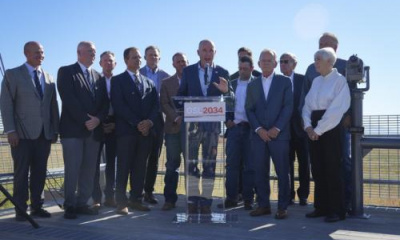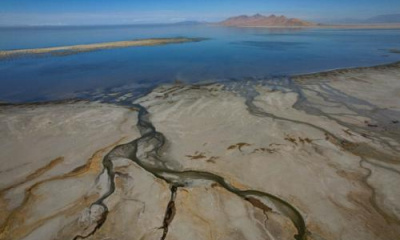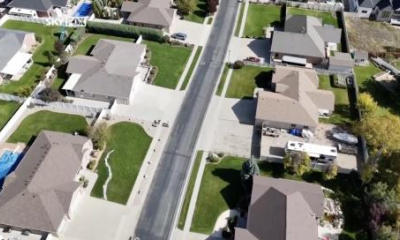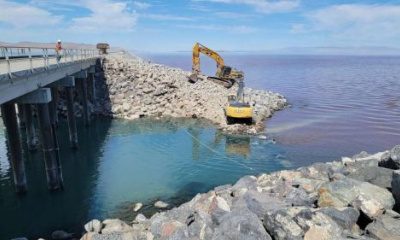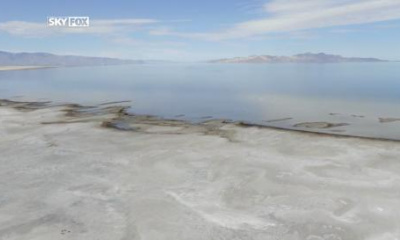SALT LAKE CITY — Brian Steed remembers feeling unsure about the type of support Utah would provide the Great Salt Lake as it started flirting with record-low levels three years ago.
He was still serving as the executive director of the Utah Department of Natural Resources at this time, and the department's concern over the lake's future continued to rise as the levels fell. They knew, based on the growing number of studies and cautionary tales from other global saline lakes, that its collapse would open up a trove of environmental issues.
Sure enough, the lake reached an all-time low in 2021 and an even lower level again last year. However, the lake has also received perhaps the most attention it has ever received as this happened.
Three years later, Steed, now Utah's Great Salt Lake Commissioner, said there's much more interest in preserving the lake than he could have imagined three years ago. In fact, Utah is now ready to release a plan on how it will try and reverse the lake's downward trajectory.
"I can tell you, honestly, that I wouldn't have perceived we would have such a broad interest base in the Great Salt Lake in upcoming years," he said, summarizing the situation now in a meeting with Great Salt Lake Collaborative reporters. "I think people have remained aware of the concerns of the Great Salt Lake."
Utah's plan will be based on recommendations that Steed presented to Gov. Spencer Cox and state legislators late last month. Utah leaders are still sifting through these recommendations and drafting a plan from them, Cox said during his monthly meeting with Utah reporters.
He anticipates that the plan will be released sometime over the "next few weeks," before it goes through final revisions and the state gets to work implementing it. The report is required to be delivered to a natural resources legislative committee and various Utah agencies by Jan. 15, according to Deputy Great Salt Lake Commissioner Tim Davis.
So how does Utah plan to save the lake? Neither the governor nor Steed offered exact details on the plan, but they did hint at ideas in separate meetings with reporters Wednesday morning.
The report is expected to include both short- and long-term actions — actions over the next few years and actions over the next few decades — to get to certain water level goals, including what policies can get the lake to those levels. It will also address ways to collect better data on the lake's health and how state agencies can better coordinate with each other over policies and measures that can impact the Great Salt Lake.
There will likely be measures to improve water and air quality featured in the plan, too. These could include efforts to mitigate dust when its lakebed is exposed, though Cox said that the most efficient solution there would be to refill the lake.
Cox said he's "very optimistic" about what will be included in the draft report.
"I think that they're hard decisions we'll have to make over time, for sure, depending on the hydrology of the watershed and the hydrology of the lake," he said. "Honestly, in the past five years, I've never been more optimistic about the lake."
Once finalized, some of the recommendations could be approved without additional legislative changes, and others could be enacted as early as the upcoming legislative session that begins in January, the governor added.
The Great Salt Lake's southern arm is currently listed at 4,192.5 feet elevation, about 3½ feet above where it was this time last year as the lake began to surge from a robust water year. Still, it's also 5½ feet below what is considered its minimum healthy level. Its northern arm is 8½ feet below the minimum healthy level.
"We still have ground to make up," Davis said.
Utah's plan for the lake isn't the only measure that will aim to chip away at those deficits. Utah agencies are in the process of developing their Great Salt Lake Basin Integrated Plan, which will look deeper at ways to be more efficient with the water that feeds into the Great Salt Lake. It's been referred to as "the plan for the plan" to save the lake.
Public comment on the first part of the plan wraps up in early January. Once that is implemented, it will "develop the tools that we will need to implement" the Great Salt Lake strategic plan, Davis said.
The Office of the Great Salt Lake Commissioner is looking at other possible changes as the 2024 legislative session approaches. The office isn't requesting any new changes or funding; however, Steed said he supports the nearly $28 million for the Great Salt Lake that Cox included in his proposed 2025 fiscal year budget, saying it can "bolster" funds already allocated to lake preservation efforts.
Some other new rules and bills could reshape mineral extraction and Great Salt Lake reporting methods.



